In this podcast we welcome our guest Bryndis Gunnarsdóttir who speaks about the Icelandic National Curriculum and the Icelandic context for playschool teachers. With passion, Bryndis also shares her research which examines friendship relations and social interactions in the toddler peer group in an early childhood education and care setting in Iceland using conversation analysis (CA). Throughout the conversation, we weave perspectives of early childhood educators/ playschool teachers, instructors, and students.
We welcome your thoughts and comments,
Antje, Selena, Patricia, and Bryndis
Retracing my steps
By Alejandra Gorostiza
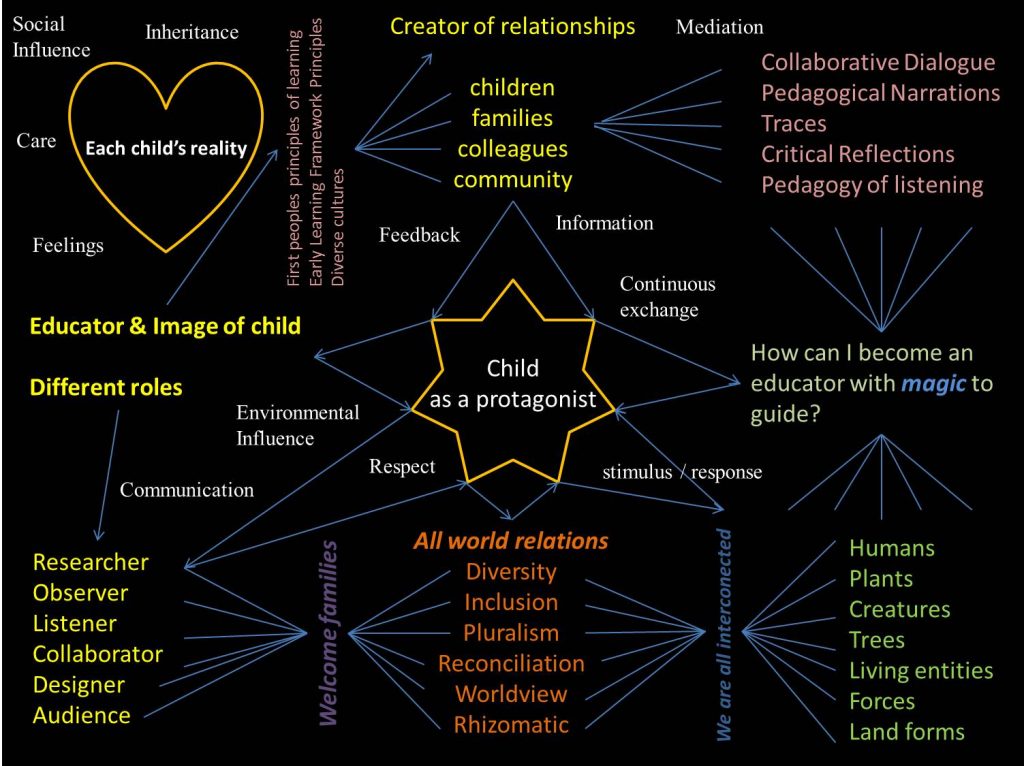
The Early Learning Framework (Government of BC, 2019) describes a rhizome as a plant that develops underground and buds in many directions and without a predictable pattern. Inspired by this image, I created this visual map of my learning connections on this wonderful, complex, and unpredictable path to becoming an early childhood educator.
Grateful for so much!
References:
Government of BC. (2019). British Columbia early learning framework. Victoria, BC: Queen’s Printer.
A Response to Responsibility.
Dear Ash,
Today I found myself in a grove, to be very specific, in an Alder Grove; I thought about how these trees are so quick to grow and that they fall quickly—constantly rising, falling and re-growing again. This speaks to the images you pull from the pedagogical narration by Shannon McDaniel called “The Educator I Once Was” (Government of British Columbia, 2019, p. 91). With this, my heart is open to new ideas, and I am, hopefully, forever willing to grow and be teachable.
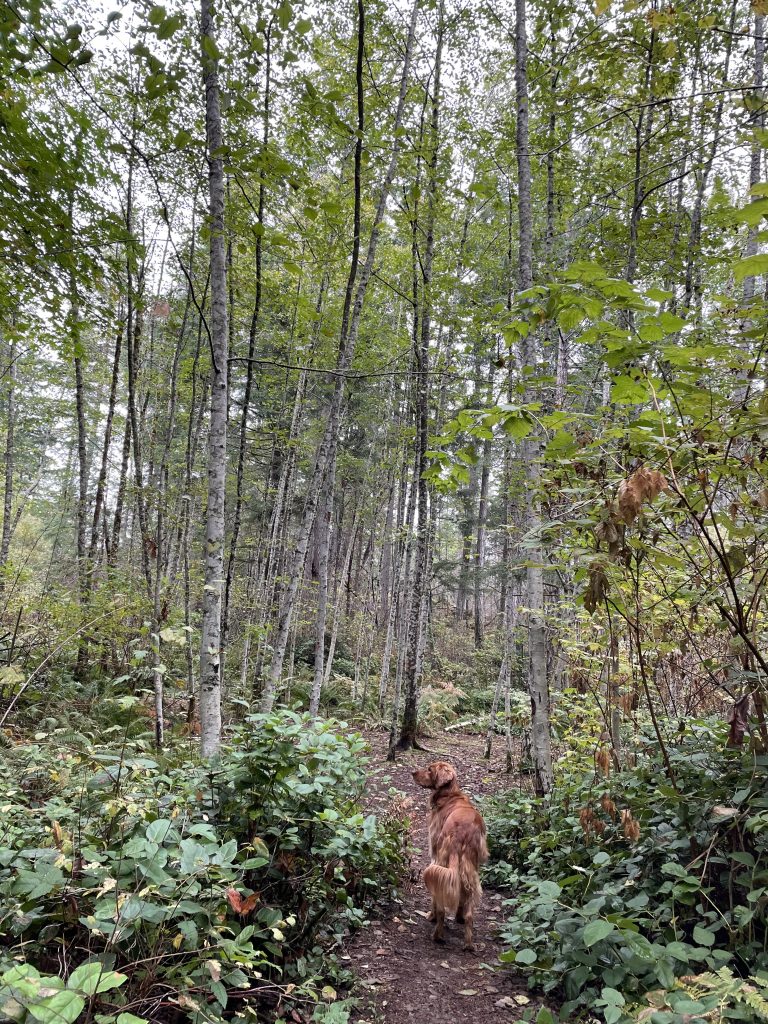
Ash’s encouragement that I may already know who I am responsible for brings joy to my heart. Her writing sings a song of welcome and invitation. I feel called to respond…
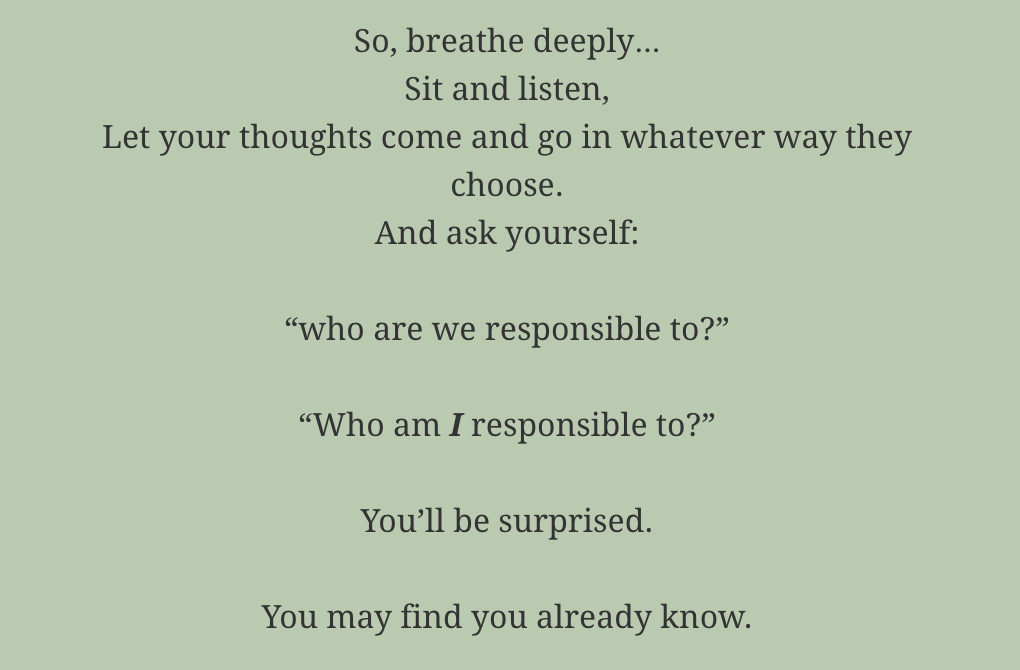
So, after her invitation to breathe, I can articulate who I feel responsible to: I feel responsible for all things human and non-human. I am also responsible for living well so others may live well too.
How might I respond to this call to be responsible? Here is the how and why of it:
- To uphold, live and breathe our Framework’s vision: “Respectfully living and learning together” (Government of British Columbia, 2019, p. 42).
- To love and be loved (human and non human).
- To feel welcome and welcome others, much like Ash has done above.
- To challenge and critically reflect on the thoughts and stories that have led me to where I am today. “To be and to become an experienced teacher is not merely the accumulation of strategies and knowledge, but rather it calls for one to confront one’s previous understanding” (Pelech & Skuce, 2020).
I will share that I appreciate Ash’s way of bringing her learning visible; It opens up an opportunity for me to do the same. I will close with this question: is it possible that we are also responsible to our colleagues?
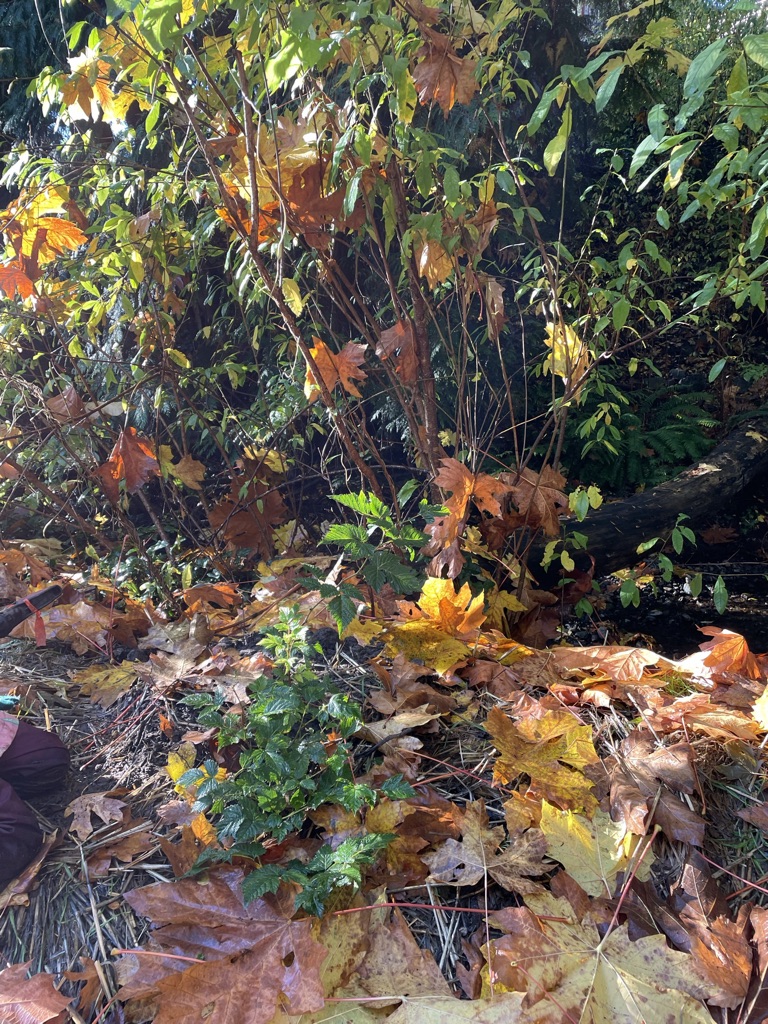
“Every breath that you take is a breath that was made for you by plants”(Kimmerer, 2019).
In Gratitude and Kindness,
Chelsea
References:
Bioneers [Bioneers]. (2019, June 11). The honourable harvest – Robin Kimmerer [Video]. YouTube. https://www.youtube.com/watch?v=cEm7gbIax0o
Government of British Columbia. (2019). British Columbia early learning framework (2nd ed.). Victoria: Ministry of Education, Ministry of Health, Ministry of Children and Family Development, & British Columbia Early Learning Advisory Group. https://www2.gov.bc.ca
Pelech, S., Skuce, T. (2020). A pedagogical venturing into the three sisters’ garden: Lessons of attunement and reciprocity in education. Journal of Applied Hermeneutics, 2020: 2020. https://journalhosting.ucalgary.ca
An Inquiry in Responsibility
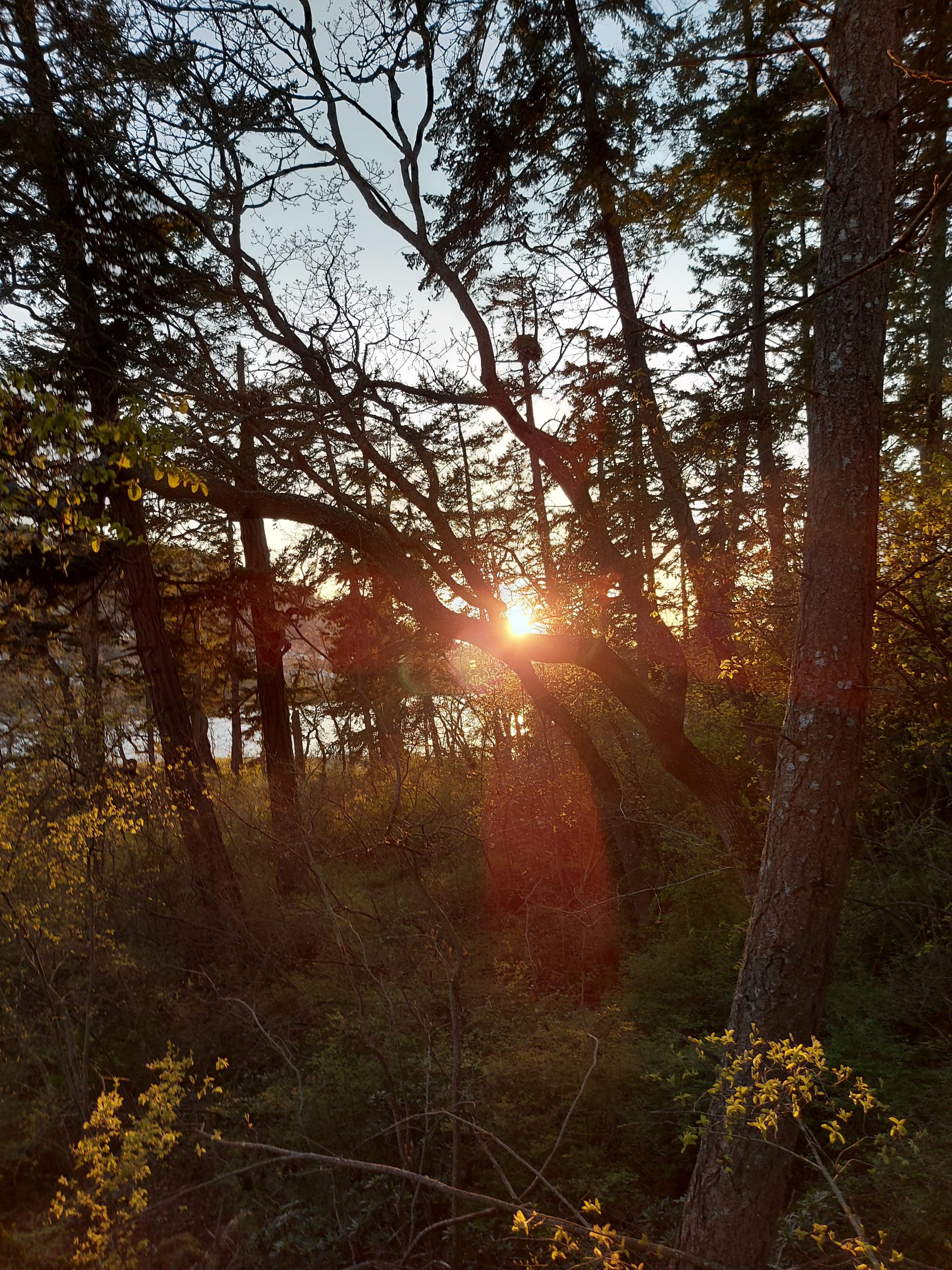
“We find our allies by being vulnerable.”
– A conversation with a loved one.
In Shannon McDaniel’s work ‘The Educator I Once’ Was she tells a story of her experience with taking children out into nature. McDaniel reflects on the transformative journey. First, her initial hesitancy and discomfort while supervising the children as they explore the forest freely. Next, her awareness and vulnerability in asking for help and support from colleagues, which is met with warmth and wholehearted acceptance. Then, in her own time McDaniels is able to ease back into spontaneity alongside the children, trusting, and observing their processes with curiosity. Through this observation and reflection McDaniel poses some profound questions. Amongst them, this:
“Who are we responsible to?”
“Who are we responsible to?”
I sit in silence between breaths waiting for an answer to uncover itself.
To Parents? Teachers?
Bosses?
Peers?
The multitude of possibilities writhe around in my head.
“Who are we responsible to?”
The children?
Mother Nature?
Our community?
“Who are we responsible to?”
Tradition? Education? History?
Slowly the pieces begin to form patterns,
falling into place.
In personal reflection of this question, I draw parallels between McDaniel’s anecdote and the answers that come to mind.
I imagine the children in McDaniel’s writing, bounding through undergrowth, laying on the forest floor, constructing fortresses built from the inspiration bursting forth from their limitless imaginations. Joyously. Honestly. And I recall McDaniel. In open an honest connection and collaboration, plunging her bare feet into the cold and squishy mud to break the tension of uncertainty within the group.
Who were they responsible to?
The bugs in the dirt? Forest flora and fauna? The dirty socks to be laundered and the mopping to certainly be done upon returning indoors?
Maybe all of these things..
And maybe none of them.

“Inclusive learning and care supports the individual strengths and needs of each child, allowing them to meaningfully engage, learn, and contribute to the community and culture of their program.”
-BC ELF P.103
At any given time, within any experience, each individual carries their own perspectives and motivations. Children and adults alike. This intrinsic and intuitive drive has such potential to be a catalyst for a plethora of rich and impactful experiences. A bridge between the known and unknown. And in tandem with connection and collaboration, an almost immeasurable opportunity for growth and transformation.
So, breathe deeply…
Sit and listen,
Let your thoughts come and go however they so choose.
And inquire honestly:
“Who are we responsible to?”
“Who am I responsible to?”
You may be surprised what you will find.
You already know.
References:
Daniels,S.(2019).The Educator I Once Was. British Columbia Early Learning Framework. 91-92.https://www2.gov.bc.ca/…pdf
British Columbia Early Learning Framework (2019). https://www2.gov.bc.ca/…pdf
Warm and Welcoming ECEC Community
By Samantha Bremner
What an amazing feeling it is to meet so many of my professors and classmates in the ECEC program for the first time in person after being colleagues and friends online for over a year. The feeling of being in a real life classroom with all these wonderful people is unreal. Being in the same space has enabled me to feel the energy of the group during discussions, and be moved by others.
When I got accepted to the ECEC program back in the beginning of 2020 I was so excited to meet new friends who had similar interests as me! When I found out that the program was going to be online due to Covid 19 I was very upset and worried as I had never done any online schooling before. Throughout the year I was convinced that I would probably never get to meet all the beautiful faces that I’ve come to know as rectangles on my computer. This year proved me wrong and let me tell you I’ve never been happier to be proved wrong!
Everyone in our ECEC cohort is amazing. We are supportive, kind, friendly and helpful. Something I have also noticed is I find it much easier speaking out loud and sharing my thoughts in a classroom, because I have grown to know and trust everyone in the program. We are creating a place to be vulnerable, knowing we won’t be judged.
Being in a class with all these amazing people gives my mood and energy such a boost, unlike zoom where I unfortunately leave the class feeling a bit drained most of the time. Yesterday a few of us decided to stay on campus after our 270 class and get some lunch before our next class! We all went and got Subway and came back to the ECEC classroom to eat it. Afterwards the six of us joined the next zoom class as a group. It was a lot of fun hanging out and getting to know each other outside of class.I am nourished by interactions.
We are also a lot taller than I thought.
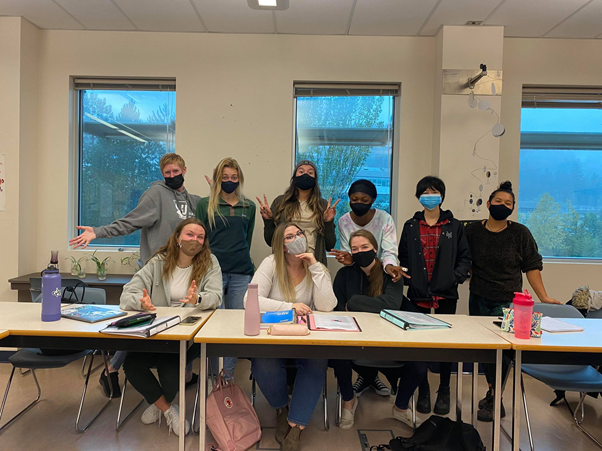
Car Wash
By Jill Adshead
Play is the highest form of research.
Albert Einstein
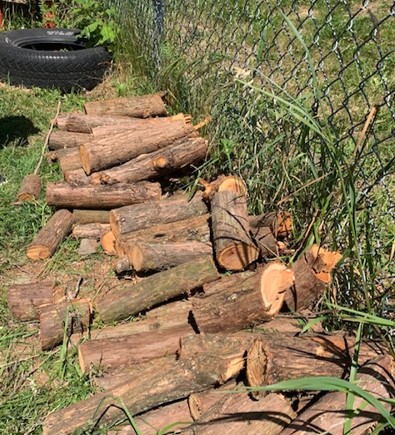
A pile of sawed off tree branches that were recently cut from a tree in the backyard.
Untouched, neatly stacked against the metal fence. The children walked by them but yet, no one showed interest.



I called over to J. “J, please come here. I have something to show you.” J ran over and looked at me standing directly in front of the logs.
“Want to build something out of these logs?” I asked. In a high-pitched voice, J excitedly said, ”Yeah!”
I asked him where we could put them. He scanned the area and focused on the tires. “There,” he pointed.
J, “I need you to help me build a track.” “Sounds like a great idea!” I answered. J’s friend R was nearby. I suggested to J that he include R in this build. J did so and they both eagerly took charge while I slipped into the background.
J, “We need them to go like that.” J and R began to line up the logs in a straight line. I found this interesting as I assumed the children would build a campfire because of the size of the logs.
J, “We need them to jump over these.” J points from from one end of the logs to the other while holding a matchbox car in the other.
R, “I want a tunnel.”
J, “Look! There’s two jumps!”
The boys continue with their build.

J, “I have an idea.” He doesn’t finish his thought but with a long sigh, “It won’t work though.”
J and R don’t conversate but are focused on their own project within their project.
R, “There’s an ant on it.” J goes to R, “Oh yeah, I see it.” R tries to catch it. J, “It’s black. The red ones are bad.”
I questioned, “What do red ants do?” J, “They bite you.”
J continues to build and R leaves the space. J does not ask him where he was going.
J, “This is going to be a carwash. It’s going to go fast, jump, jump and over to the other side.”


J asks if I could fill a watering can for him and I do.
J, “Thanks.”
J slowly pours the water over the car. He proceeds to get the car dirty in the dirt and washes it off with water. This is action is repeated.
J stands up, leaving his car and water on the ground. With his left hand on his chin, “This is what I do when I am thinking.” He walks in circles. J, “I’m thinking. This is what I do when I think.” With his left hand he taps his chin.
He walks back to his car and watering can. “Wash, rinse, rinse, dry.”
He continues, “How do we dry it off?”

At this point in time, I could have given a multitude of answers, but I wait. I say, “Great question! How do we dry it off?”
J stands up again with his left hand on his chin and walks in circles. “In the sun!” he exclaims.
He walks over and leaves the car on a wooden table to dry out in the sun.
J, “40 minutes to dry out in the sun. It will be done drying when we are done the track.”
Lingering questions
- How do I engage with children? When might I step in and when might I step back?
- “What kinds of questions do I ask about children’s engagements? How does my language reflect children as creators of theories? How do my questions reflect children as constructors of knowledge?” (ELF, p. 76)
- How could this play be extended? “What materials invite experimentation, problem solving, or intrigue?” (ELF, p. 77)
- What are the complexities of being an educator and researcher? What am I listening to? What matters to me? And what do I make visible in documentation?
- How are children involved in the process of working with documentation? What are some ways children can give permission to share the stories? Where do the stories live?
Reference:
Government of British Columbia. (2019). British Columbia early learning framework (2nd ed.). Victoria: Ministry of Education, Ministry of Health, Ministry of Children and Family Development, & British Columbia Early Learning Advisory Group. https://www2.gov.bc.ca/gov/content/education-training/early-learning/teach/early-learning-framework
Inspiring Pedagogical Narrations
By Heather Wilson
In the reading ‘The Educator I Once Was’ by Shannon McDaniel in the Early Learning Framework (Government of BC, 2019, p. 91-96), I wonder how much time and reflection took place before she felt able…
“… to be more spontaneous in the woods.”
I wonder about her initial anxiety and how she perceives that experience as her practice continues. Does she always think back to this memory and see the positivity in how far she has come? Or is she thankful for her apprehension, as it guides her more than it stunts her growth as an educator?
When she models her own curiosity by putting her barefoot in the mud, the educator and child experience, learn and grow together, and she captured it beautifully in her Pedagogical Narration.
McDaniel’s story connects me back to Ted Aoki’s (2004) article, ‘Teaching as In-Dwelling between Two Curriculum Worlds’, where he mentions, “… there is a forgetfulness that teaching is fundamentally a mode of being” (p.160). To me McDaniel’s role as an educator has gone far beyond a simple statement of, ‘taking toddlers into the forest’ but she lived her experiences with the children and with her colleagues.
The children saw her vulnerable on both occasions mentioned above. First, with her anxiety of her capabilities and the children’s’ in the woods, but by asking for help (from her colleagues) she models to the children what they might do if they are afraid. I wonder if she presented her fears to the children. What kind of outcome or solution would they present? Her second engagement with the toddlers, forest and mud was another moment of vulnerability. The educator is trying a new thing, pushing her comforts and exploring her senses and environment – just what we as educators are trying to give the children.
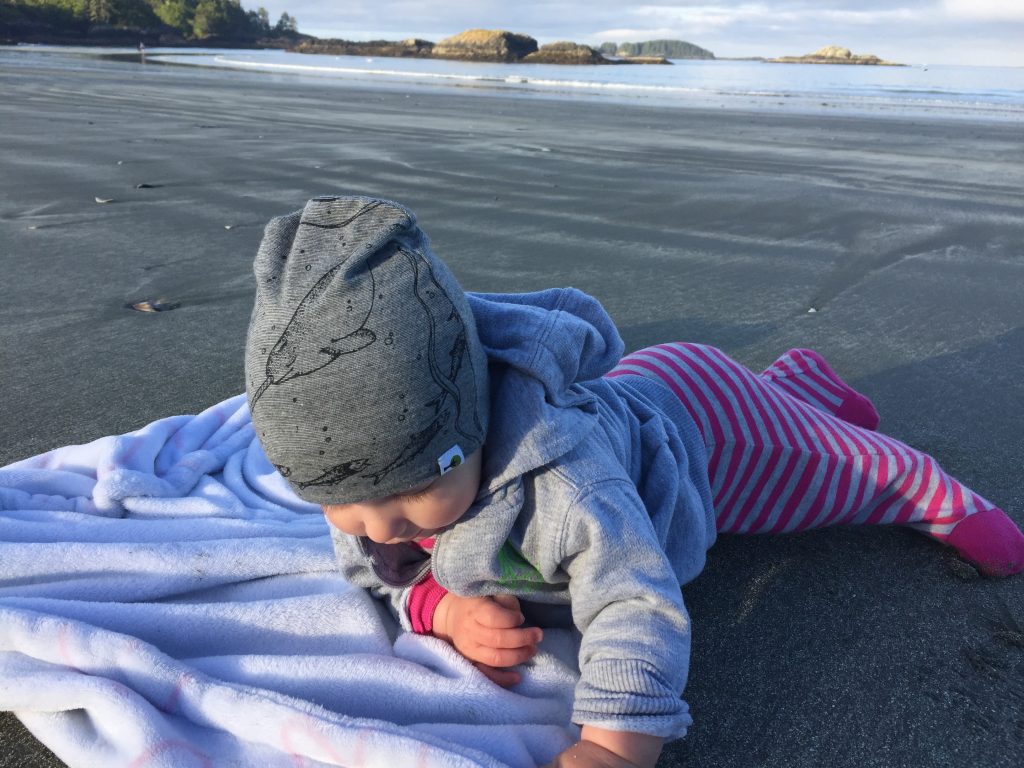
She presented an amazing example of modeling by just being true to herself. That cannot be taught in one lesson, it is taught in experiences, places and relationships.
References:
Aoki, T. T. (2004, 2011). Curriculum in a new key: The collected works of Ted T. Aoki (W. F. Pinar & R. L. Irwin, Eds.). Lawrence Erlbaum, Routledge.
Government of British Columbia. (2019). British Columbia early learning framework (2nd ed.). Victoria: Ministry of Education, Ministry of Health, Ministry of Children and Family Development, & British Columbia Early Learning Advisory Group. https://www2.gov.bc.ca/gov/content/education-training/early-learning/teach/early-learning-framework
Conversations Through the Fence
By Amanda Gillmore and Jade Felty
Amanda Gillmore and Jade Felty are second year Early Childhood Education and Care Diploma students at Vancouver Island University. In April 2021 they both started their final Infant & Toddler practicum at two different locations in Central Vancouver Island and ended up being next door neighbours. All that was dividing them was a chain link fence.
Within the first few days of Practicum Jade had noticed Amanda and called out to her and waved through the fence. Before this practicum Amanda and Jade had never met in-person, but due to the Pandemic they met in 2020 through the transition of online courses with Vancouver Island University.

“Over the past 5 weeks I have had the opportunity to meet with Amanda through the fence at Practicum. It has been wonderful being able to make contact and connect with another student in my cohort during the isolating times of the Covid-19 pandemic. We exchanged thoughts and feelings about community, connection, our pedagogical narrations, and our lives. On our last visit Amanda and I exchanged letters.” Jade



“I fondly remember the first time that I met Jade in-person. I was outside at my new Practicum Centre, and I heard my name being called, but I didn’t recognize the voice or where it was coming from. I looked up and there waving and smiling through the fence was Jade- my VIU ECEC colleague. Jade and I had only ever met online through our ECEC classes through Zoom. We briefly had a conversation and with agreeance from our Practicum Instructor we decided to meet regularly outside of each of our centre’s sitting along the fence. I had one request that our conversations be organic and focus on each other, self-compassion and heart focused on what each of us needed on that day we would meet. Each week we would check in with one another, normally twice a week, ranging from 30 minutes to 1 hour. It was exactly what both of us needed and we maintained this weekly having our conversations through the fence.” Amanda
Beyond the blog: creating a podcast
Please enjoy this podcast episode about the VIU ECEC blog released by VIU’s Centre for Innovation and Excellence in Learning: https://wordpress.viu.ca/ciel/2021/06/01/episode-15-that-extraordinary-event-that-rippled-out-of-those-beginning-places-heather-wilson-ecec-student-cheryl-cameron-ecec-practicum-coordinator-antje-bitterberg-ecec-ch/
Meal Time Journey
By RoseMary Antony
Setting the mood
Little feet tap with excitement,
Little eyes wait with longing,
Few little minds forget its coming,
‘Its time for snack’ as the teacher remarks.
The gates open to meal prepped tables,
number of little feet scramble to spot their seats,
oh , the joy to see the familiar(their snack boxes),
‘Its time for snack’ as the teacher hums.
The mood is calm, the mood is focus,
munching into their snack with a sense of purpose,
a spill or two is cleaned with care,
‘Its time for snack’ as the teacher smiles 🙂
The choices
From cottage cheese to applesauce,
to crackers and sandwiches.
The choices are one too many,
For little minds to fathom hastily.
A spoon, a bib, ”I’ll open it” an excited friend speaks,
the cold strawberry yogurt is savored with every spoon.
Across the table a little friend perplexed,
pushes away all the choices with a sudden reflex.
A patient educator with a calm and softness in her tone,
offers time to process the choices that lay forth
a momentary pause later a decision is made,
‘I want this’ the little finger points to the quinoa salad that awaits.
The closing
” I want something else”,
“I’m done”,
Few little fingers play with an empty container in sight,
Snack time is coming to an end
Let’s get you cleaned up,
Here’s a wet cloth and a wipe,
Little hands wipe and clean themselves
I want water, I want milk,
Little faces and tummies flooded with joy,
“I want to go play again”
As tables and chairs creak across the floor,
Little friends are excited to return to play,
A teacher stays back, humming a rhyme,
as she wipes and cleans every little crumb.




